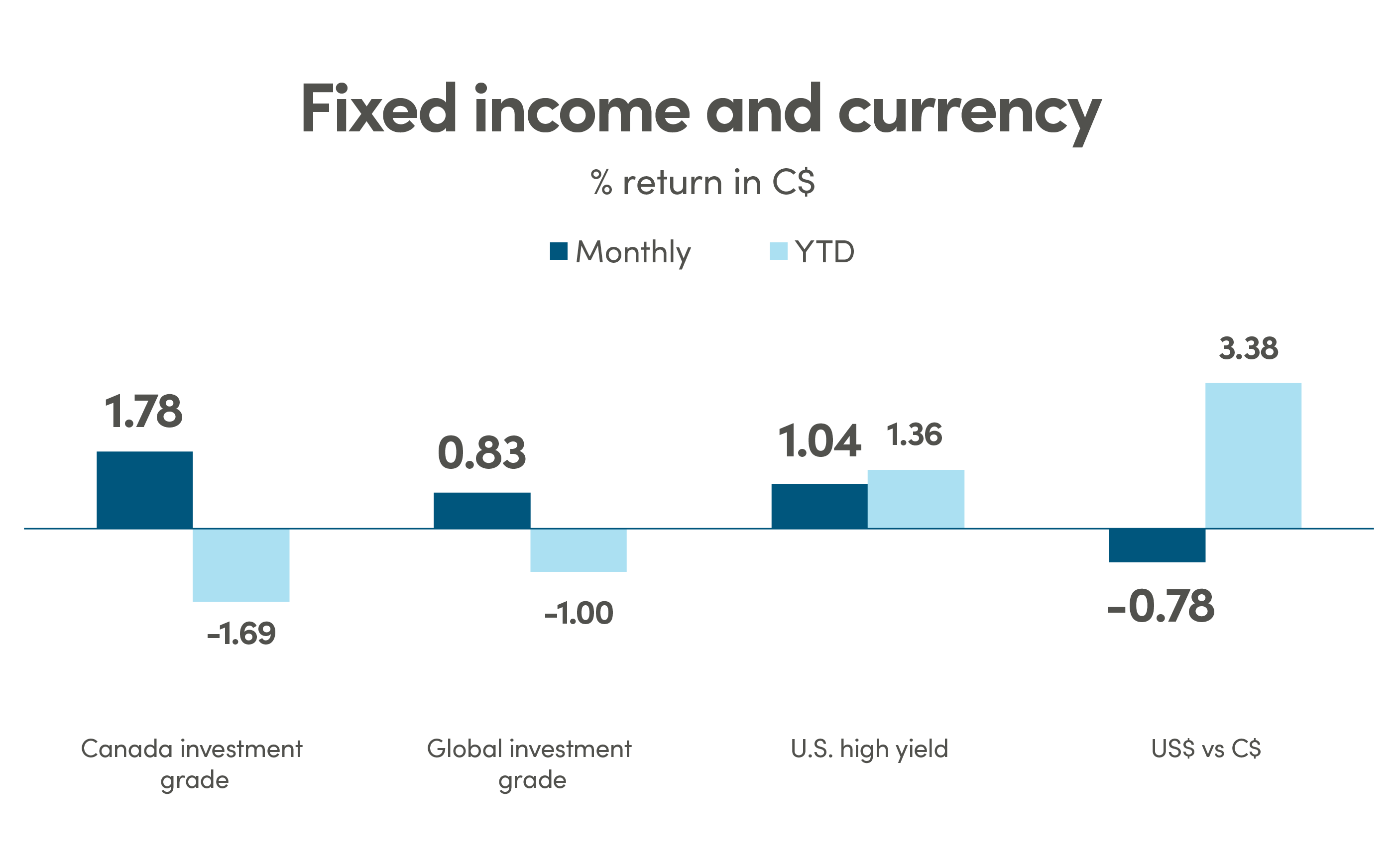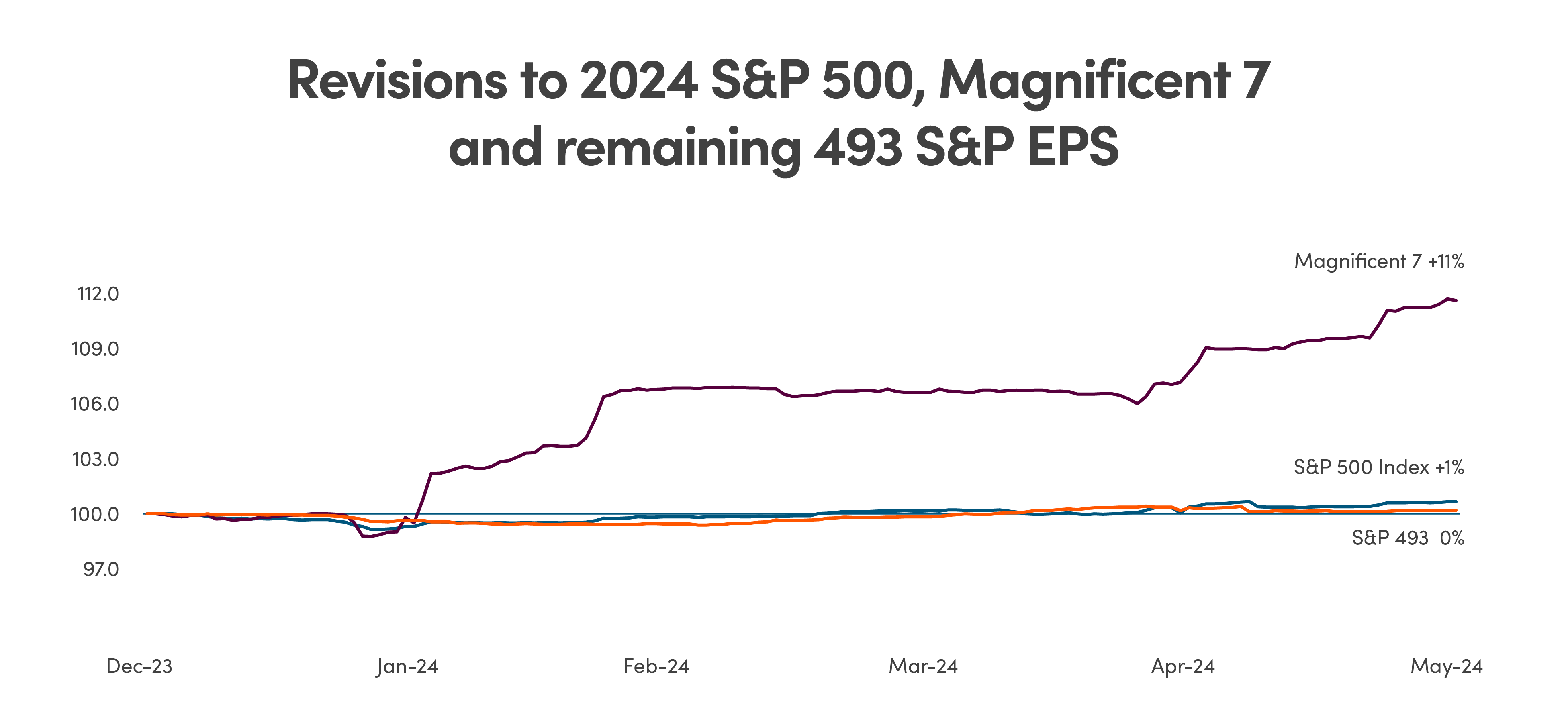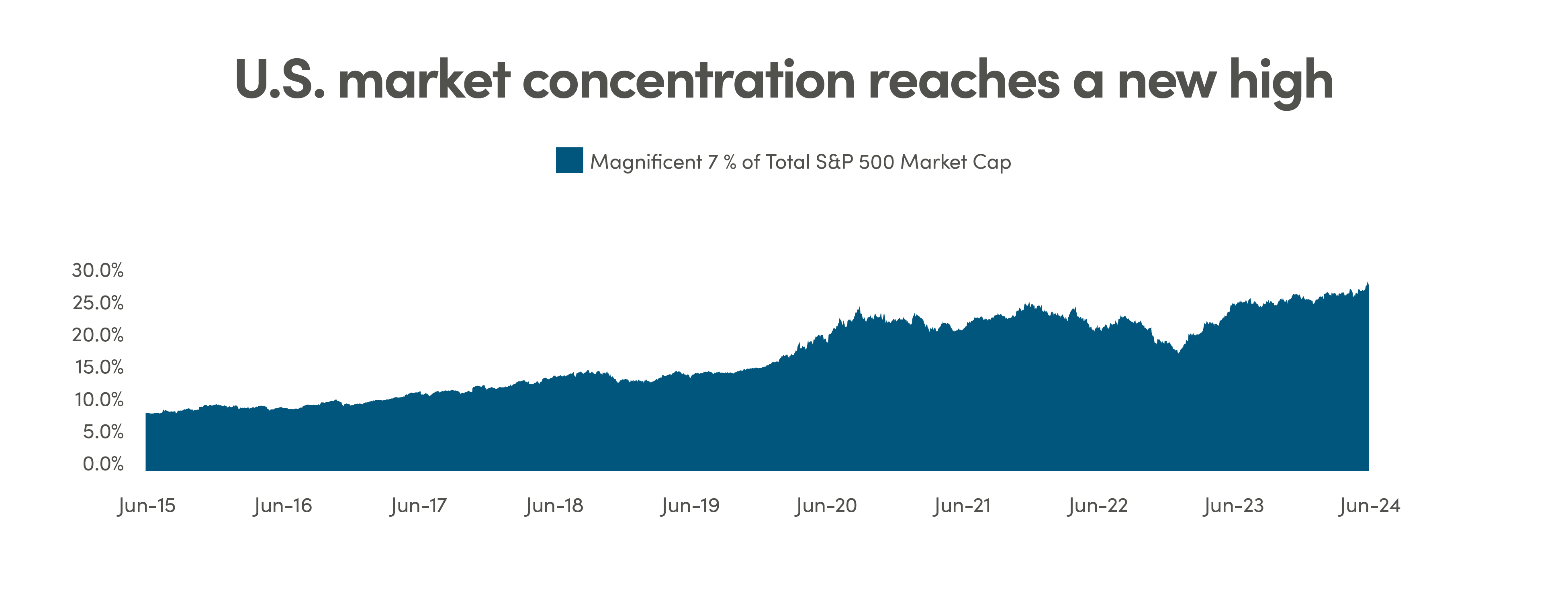June 2024 Monthly Market Insights
Data and opinions as of May 31, 2024
Equities continue the rally, but economic paths diverge
After a brief respite in April, global equities resumed the rally to find higher ground in May, as ongoing moderation of inflation and resilient economic trends continue to boost investor optimism. The S&P 500 Index returned 4.1% driven by optimism on rates outlook, better than expected corporate earnings, and the strength in growth trajectory in the information technology (IT) and communication services sectors. The utilities sector in the U.S. also rebounded dramatically, benefitting from renewed investor interest from compressed valuations and the potential to benefit from lower interest rates on the horizon. Gains were more muted in Canada and Emerging Markets at 2.6% and -0.2% respectively, both primarily due to the relative lag in the IT sector. Europe also had a strong month returning 4.0% in CAD terms, partly due to currency fluctuations.
Canadian and global fixed income also generated positive performance of 1.8% and 0.8% for the month, with significant movements on yields during the month as markets speculate on divergence in the timing of rate cuts between the major central banks.
The NEI perspective
In addition to the increasingly divergent path of regional economies, the inflation trajectories in the U.S., Canada and Euro area are also causing central bank policy responses to be less synchronized.
78% of S&P 500 companies reported Q1 results that exceeded consensus estimates. The S&P 500 reported earnings growth of 6.0%, the highest year-over-year since Q1 of 2022. Strong earnings of mega-cap companies helped with this growth.
Utilities have emerged as a top performer as investors have started to look outside of mega-cap technology for diversification into other more defensive sectors, due to certain risks in U.S. markets.
From NEI’s Monthly Market Monitor for May.

Canada: MSCI Canada; U.S.: MSCI USA; International: MSCI EAFE; Emerging markets: MSCI Emerging Markets. Source: Morningstar Direct

Canada investment grade: Bloomberg Barclays Canada Aggregate; Global investment grade: Bloomberg Barclays Global Aggregate; U.S. high yield: Bloomberg Barclays U.S. High Yield. Source: Morningstar Direct
Central bank policies diverge
In addition to the increasingly divergent path of regional economies, the inflation trajectories in the U.S., Canada and Euro area are also causing central bank policy responses to be less synchronized.
Canada's disinflationary momentum continued, as April's 2.7% headline CPI and moderation in core measures like CPI-Trim and CPI-Median pointed towards an imminent easing cycle by the BoC. On June 5th, the BoC led the major central banks to kick off this easing cycle and cut overnight rates by 0.25% to 4.75%.
Contrastingly, the Euro area saw an upside surprise in core inflation, with core HICP accelerating to 2.87% year-over-year in May, driven by a notable pickup in services price growth. Despite this uptick in core inflation, the European Central Bank (ECB) also kicked off the long-awaited easing cycle on June 6th, cutting rates by 0.25% to 3.75%.
The U.S. exhibited signs of easing inflationary pressures, with core CPI rising a muted 0.16% month-over-month in May, the slowest pace since August 2021. This softening has raised expectations of the U.S. Federal Reserve (Fed) to potentially to able to initiate rate cuts as soon as September.
In response to fluctuating rate cut expectations, U.S. bond yields were on a rollercoaster ride in May. Both 2-year and 10-year yields in the U.S. fell by 40bps since the end of April. A weaker-than-expected April jobs report fueled speculation of an economic slowdown, causing bond yields to decrease as investors anticipated earlier interest rate cuts by the Fed. However, yields rebounded in mid-May as persistent inflation and stronger data, such as the flash PMI readings, reminded investors that the Fed might need to maintain higher rates for longer to tame inflation, with markets now pricing in one rate cut by year end, from a previously expected two.

Source: Bloomberg LP.
Strong earnings of mega-cap companies lead to highest market concentration
78% of S&P 500 companies reported Q1 results that exceeded consensus estimates. The S&P 500 reported earnings growth of 6.0%, the highest year-over-year since Q1 of 2022.
However, rather than excitement based on the strong Q1 results, investors focused on forward-looking earnings guidance. 80 companies issued negative EPS guidance and they typically lagged the index despite beating expectations on actual results, while firms that raised guidance outperformed.
Despite the softening macroeconomic backdrop in the U.S., analysts have been revising the Q2 2024 EPS estimates upwards after the Q1 results. It has been better than usual due to rosy forward guidance from the largest firms. Analysts typically reduce earnings estimates as the year progresses, by a median of 4%. This year, however, analysts have lifted their full year 2024 EPS estimates for the Magnificent 7 companies by 11% while the estimates for the other 493 companies remained flat, leaving the aggregate 2024 S&P 500 EPS forecast revised up by 1%.

Source: FactSet, Goldman Sachs Global Investment Research
In line with their strong earnings and revisions, the mega-caps have continued to dominate market performance resulting in highest levels of market concentration in recent history, with the largest 10 stocks now representing 35% of S&P 500 index market capitalization.
The most significant contributor was Nvidia. Nvidia surged after the first quarter earnings, reporting a 260% increase in overall revenue and 500% increase in operating income driven by the company's dominance in the AI chip market catering to the surging demand from major tech giants like Google, Microsoft, Meta, Amazon, and OpenAI.

Source: FactSet, Goldman Sachs Global Investment Research
Utilities emerge as top performers
As elevated valuation and increasing market concentration poses additional risks in the U.S. markets, not to mention geopolitical risks given the upcoming election, investors have started to look outside of mega-cap technology for diversification into other more defensive sectors. Over the last few months utilities have been a beneficiary of that.
Utilities stocks have emerged as the top-performing sector over the past three months, which have experienced an expansion of multiples from very compressed levels. Tailwinds for further runway include easing monetary policies, slowing economic growth in the U.S., and the rising demand for electricity from the growth of artificial intelligence and data centers.
The rapid advancement of AI technology has led to a significant increase in the need for data centers, which consume vast amounts of electricity. As major tech companies ramp up their investments in AI and data centers, the demand for power from utilities, especially those focused on clean energy and nuclear power, is expected to surge. This has made utilities an attractive play on the AI boom.

Source: Bloomberg LP.
Additionally, utilities' traditional defensive characteristics have also contributed to their outperformance, with concerns about slowing economic growth and potential rate cuts.

Legal
Aviso Wealth Inc. (“Aviso”) is the parent company of Aviso Financial Inc. (“AFI”) and Northwest & Ethical Investments L.P. (“NEI”). Aviso and Aviso Wealth are registered trademarks owned by Aviso Wealth Inc. NEI Investments is a registered trademark of NEI. Any use by AFI or NEI of an Aviso trade name or trademark is made with the consent and/or license of Aviso Wealth Inc. Aviso is a wholly-owned subsidiary of Aviso Wealth LP, which in turn is owned 50% by Desjardins Financial Holding Inc. and 50% by a limited partnership owned by the five Provincial Credit Union Centrals and The CUMIS Group Limited.
This material is for informational and educational purposes and it is not intended to provide specific advice including, without limitation, investment, financial, tax or similar matters. This document is published by AFI and unless indicated otherwise, all views expressed in this document are those of AFI. The views expressed herein are subject to change without notice as markets change over time. Views expressed regarding a particular industry or market sector should not be considered an indication of trading intent of any funds managed by NEI Investments. Forward-looking statements are not guaranteed of future performance and risks and uncertainties often cause actual results to differ materially from forward-looking information or expectations. Do not place undue reliance on forward-looking information. Mutual funds and other securities are offered through Aviso Financial Inc. Commissions, trailing commissions, management fees and expenses all may be associated with mutual fund investments. Please read the prospectus before investing. Unless otherwise stated, mutual fund securities and cash balances are not insured nor guaranteed, their values change frequently and past performance may not be repeated.
The MSCI information may only be used for your internal use, may not be reproduced or re-disseminated in any form and may not be used as a basis for or a component of any financial instruments or products or indices. None of the MSCI information is intended to constitute investment advice or a recommendation to make (or refrain from making) any kind of investment decision and may not be relied on as such. Historical data and analysis should not be taken as an indication or guarantee of any future performance, analysis, forecast or prediction. The MSCI information is provided on an “as is” basis and the user of this information assumes the entire risk of any use made of this information. MSCI, each of its affiliates and each other person involved in or related to computing, computing or creating any MCI information (collectively, the “MSCI Parties”) expressly disclaims all warranties (including, without limitation, any warranties of originality, accuracy, completeness, timeliness, non-infringement, merchantability and fitness for a particular purpose) with respect to this information. Without limiting any of the foregoing, in no event shall any MSCI Party have any liability for any direct, indirect, special, incidental, punitive, consequential (including, without limitation, lost profits) or any other damages.